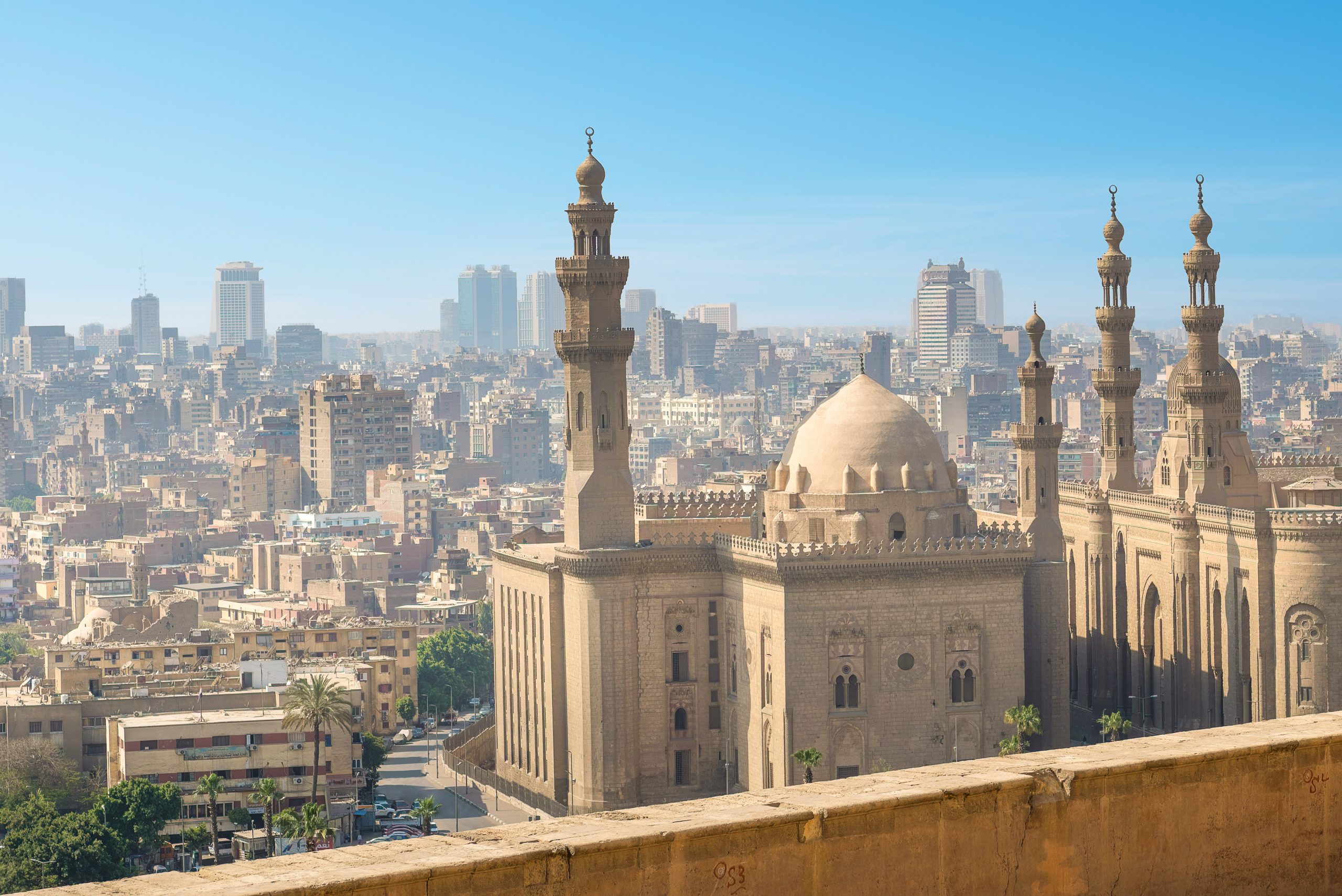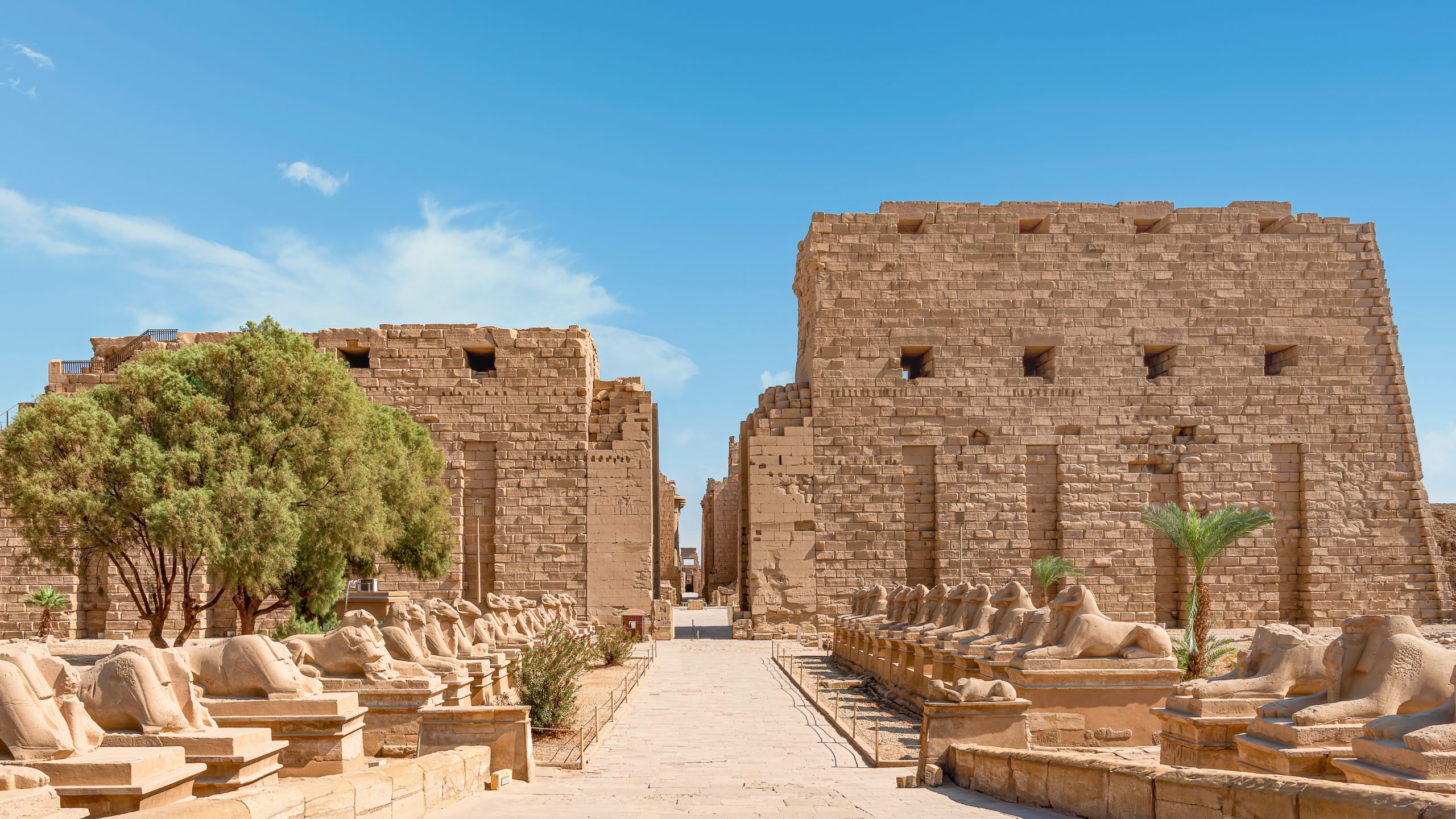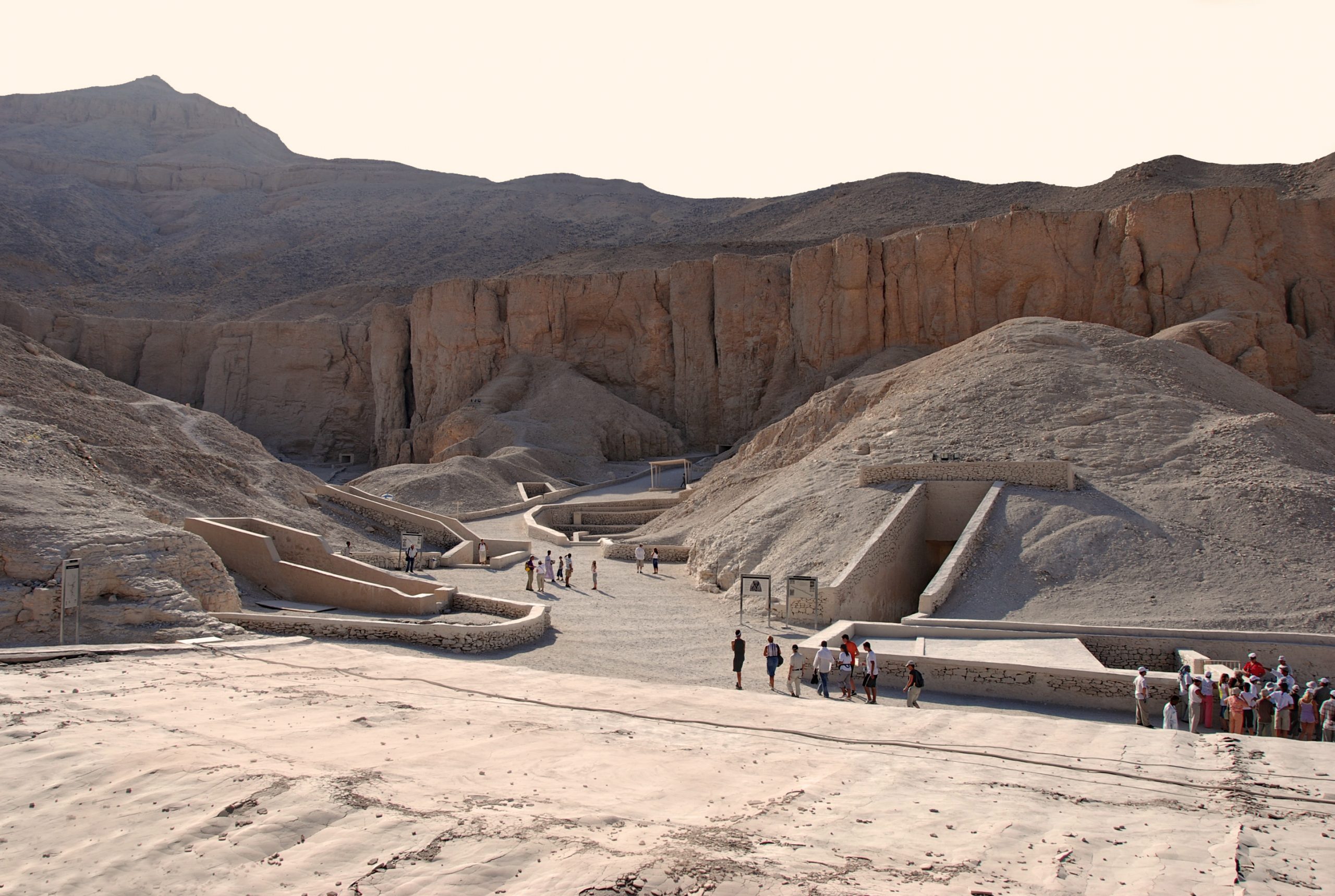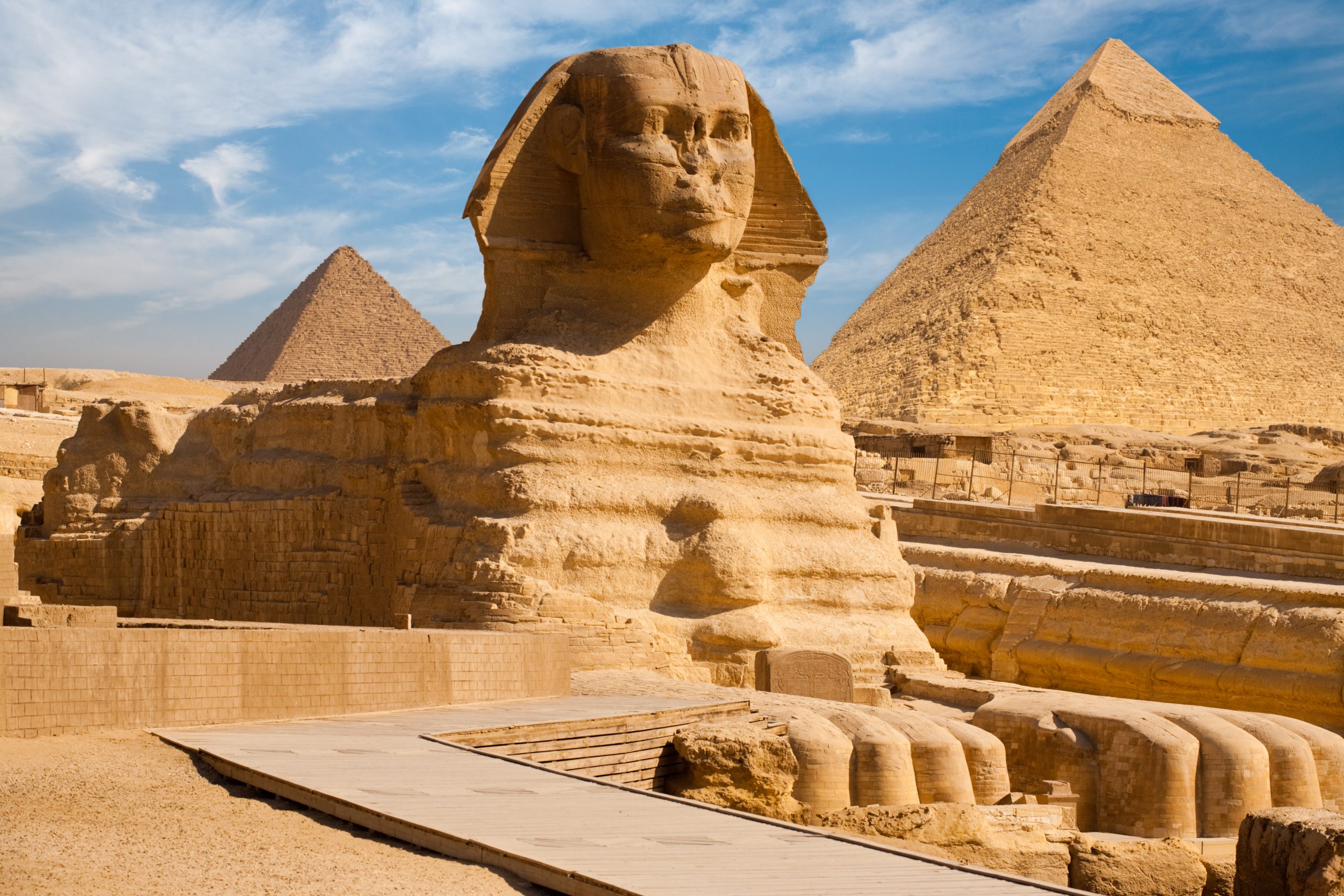'This is, after all, the last remaining wonder of the ancient world' — One writer's pilgrimage to the Egyptian pyramids
Egypt's ancient masonry structures have long been on Country Life's Tiffany Daneff bucket list, but it took the opening of the new Waldorf Astoria hotel and a promised peek at the long-awaited Grand Egyptian Museum to get her there.


As the plane tipped its wings for the descent to Cairo International Airport, the picture in my mind of the four day trip ahead — my first to Cairo — was of Obelix clambering up the face of the Sphinx and breaking off its nose. Ever since reading Asterix and Cleopatra as a child I have dreamed of seeing the pyramids of Giza. The worry was, would they live up to my expectations?
The short answer is yes. That’s not just to do with their monumental size, but because in all the wonderful chaos and flux that is modern Cairo neither they nor the sphinx have been spoiled by the trappings of tourism.

I’m not sure what I expected of Cairo — a city of 22 million and growing — but construction must be in its DNA. From the raising of the Great Pyramid of Giza in around 2600 BC to the present government’s futuristic mega development, 28 miles outside Cairo, of a New Administrative City (which will house the main government departments, ministries and foreign embassies) the vision is consistently huge and the scale intended to astonish.
Perhaps, it is a need to fight the endless sands of the desert.
Our hotel, the Waldorf Astoria Cairo Heliopolis, which is a brilliantly convenient 10 minute taxi ride from the airport, offers another example of the work of this building gene. With its towering glass atrium filled with palms and exotic plants it offers a wonderful respite from the chaos outside. The hotel only opened in March this year (2024), and it’s the ideal base from which to explore the city, the museums, Downtown Cairo, the Khan El Khalili Bazaar and El Moez street which dates from the 10th century.

Convenient, comfortable and luxurious, it was easy to recover from the flight over cocktails in Bar Raa, followed by freshly made salads and mezzes from the modern Mediterranean menu in the Brasserie. (The goat’s cheese flatbread is a must).
The rooms are beautiful and I found a box filled with delicious stuffed dates and little patisseries. There’s a lovely swimming pool (above) in the garden and I wished I could have tried the Psammo sand therapy treatment tables in the spa, but there were pyramids and mummies to see and after breakfast the next morning — top marks for the buffet — we headed out.
Exquisite houses, the beauty of Nature, and how to get the most from your life, straight to your inbox.
As our Nubia Tours minibus weaved through the traffic (and, no, I do not recommend trying to drive yourself because the rules of the road are brutal: it’s each for himself and just keep pressing that horn) the wonderful tour guide, Manal, pointed out the walls and towers of the 12th century fortress built by Saladin and now bristling with cranes as new buildings go up.
The government is clearing the slums and building apartments for the homeless who used to and perhaps still do squat in the City of the Dead, a complex of tombs and mausoleums that spread for four miles and is where Muslims have buried their dead for more than a thousand years.
One of the most interesting new buildings, and certainly on a pharaonic scale, is The Grand Egyptian Museum (GEM). This was meant to open when Covid struck, then it was delayed after the October 7 (2023) Hamas-led attack on Israel, but it hopes to open soon.
For now the cafes and museum shop are open and you can visit the massive atrium and staircase peopled with 60 statues of which one of the most arresting is of Rameses II who ruled for 66 years, lived into his 90s and brought peace and prosperity to Egypt. There’s a touching portrait of his first wife on the side of the statue, though after her death he had many more wives and masses of children. At the top of the broad steps is a huge window offering our first view of the pyramids at Giza.
A guide is essential when trying to work out who did what over a civilisation that lasted over 3,000 years and encompassed more than 30 dynasties and 100 pharaohs.

The first ruling dynasties (around 3100 BC to 2686 BC) saw the unification of Egypt and the founding of Memphis as its capital as well as the invention of hieroglyphic script and the first use of stone in architectural building. The period 1550 BC to 1069 BC covered the reign of Akhenaten — of whom there is a remarkable head from what would have been the top of a colossal statue at Karnak (above) with almond shaped eyes and a long pointed face. He is the only pharaoh depicted like this and was infamous for abandoning the old gods in favour of the sun, Aton. So appalled were the ancient Egyptians that after his death his name was erased wherever it had been carved.
The last native pharaohs of the 30th dynasty ruled from around 380-343 BC when the Persians invaded and after that we enter more familiar territory with Alexander the Great arriving in 332 and declaring himself Pharaoh.

Although the galleries won’t open until the official opening, which it is hoped will be later this year, all the artefacts are already here bar the 12 masterpieces of Tutankhamun which will complete this magnificent collection.
In the meantime you can visit the temporary exhibition, 'Tutankhamun: the immersive experience'. This involves sitting in a tomb-like, rectangular chamber while the history of Ancient Egypt up to the discovery of that famous tomb at Luxor plays over the walls and floor.
I’ll be sorely tempted to return in order to see the solar boat of Cheops which was discovered in 1954, disassembled into 1,224 pieces before being buried just in front of the Great Pyramid of Giza. It was put back together in 1968. But there was a second solar boat buried alongside and which visitors to the GEM will be able to watch being reassembled by the museum’s experts in the courtyard of the museum.
If you want to see the mummified kings and queens of Egypt, however, you have to go to the Royal Mummies Hall at the Museum of Civilisation. Here they are displayed below ground in darkened rooms. No talking is allowed and no photography out of respect to the dead. It did feel as though one was at the funeral staring down at these deeply browned faces — the colour comes from the tar used in their preservation.
Queen Hatshepsut, the first woman to rule Egypt, is there. And, so too, is Rameses II. It was strange to see his features, noble and serene surrounded by whisps of short white hair.
Upstairs on the ground arranged in chronological order from 3000 BC to the present day, are some of the most extraordinary artefacts. The highlights: a skeleton of a young man from 35,000BC; bread rolls c.3000 BC looking a bit brown as if they’d been in the oven rather too long and, my favourite, also from 3000 BC, a prosthetic big toe constructed from leather, made for a woman who had lost hers.

At last we were off to Giza, to see the Great Pyramid and the Sphinx (above). I remember my huge disappoint on first seeing the Mona Lisa: it was so small!
But the Sphinx is huge, the paws themselves are 50 feet long and as for its face, it seems to hold millennia in its enigmatic expression. The pyramids are magnificent and once you walk around the side of Cheops’ Great Pyramid leaving behind the flurry of tourists taking selfies you can begin to try imagining the past and the mighty achievements of the ancient Egyptians.
This is, after all, the last remaining wonder of the ancient world.
Rooms at the Waldorf Astoria Cairo Heliopolis from £279, including taxes, in a King Deluxe Room, and from £302 including breakfast. Visit www.hilton.com/en/hotels/caiwewa-waldorf-astoria-cairo-heliopolis for more information and to book
Previously the Editor of GardenLife, Tiffany has also written and ghostwritten several books. She launched The Telegraph gardening section and was editor of IntoGardens magazine. She has chaired talks and in conversations with leading garden designers. She gardens in a wind-swept frost pocket in Northamptonshire and is learning not to mind — too much — about sharing her plot with the resident rabbits and moles.
